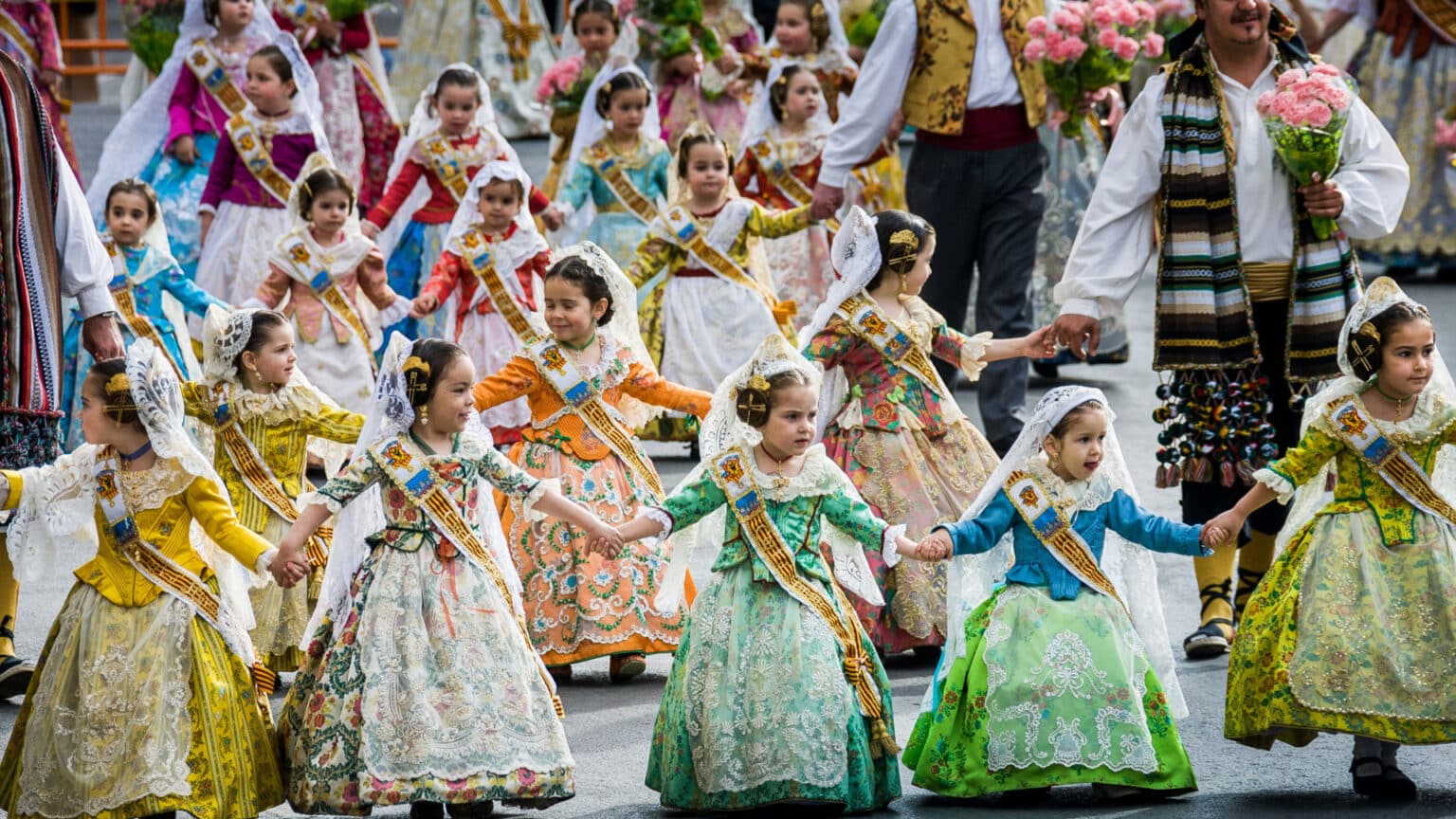Lanzarote, like all of Spain, loves Fiestas and special events. Fiestas are ingrained into locals’ psyche and are always supported in huge numbers. Almost every town and village has a fiesta. With Lanzarote being small, that means throughout the summer, you are never far from away from a not to be missed Fiesta or event.
April is the only month of the year that Lanzarote does not have a fiesta, and they end in September, ready for the children to return to school.
So, what can you expect from the carnivals and fiestas if you are in Lanzarote during the summer months?
Traditional Carnivals of Lanzarote
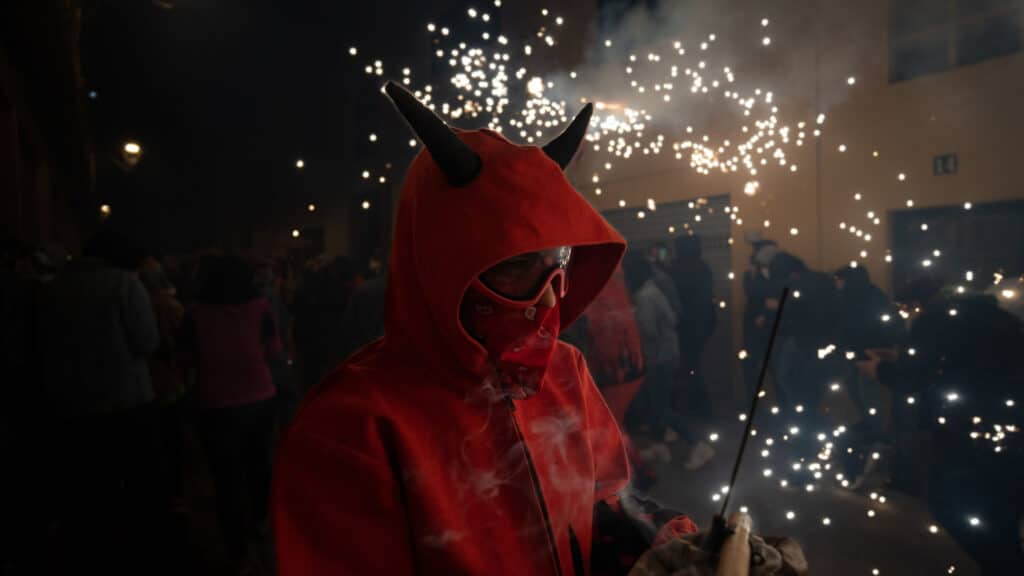
Lanzarote has a long tradition of carnivals, some quite strange. One of the most unusual is The Carnivals in Teguise. Here you can enjoy the “Diabletes” or Devils.
This is one of the most genuine displays of Canarian tradition, a mixture of Aboriginal, Castilian and Moorish religions.
The Devils are all dressed in clothes painted with red or black diamonds and the mixed devil and bull masks. Each mask comes with the essential accessories of large horns and a very long red tongue.
The Devils run through Teguise with sheepskins, sticks, ropes and goatskin bags throughout the entire Carnival.
The Carnivals in Arrecife introduce you to the “Buches”. These are swollen fish bladders carried by sailors in costume and used to “beat” those they meet in the streets. Today this tradition is maintained through the Parranda (Party) Los Buches. Meanwhile, the musicians sing and play traditional seaside songs.
Lanzarote Carnival
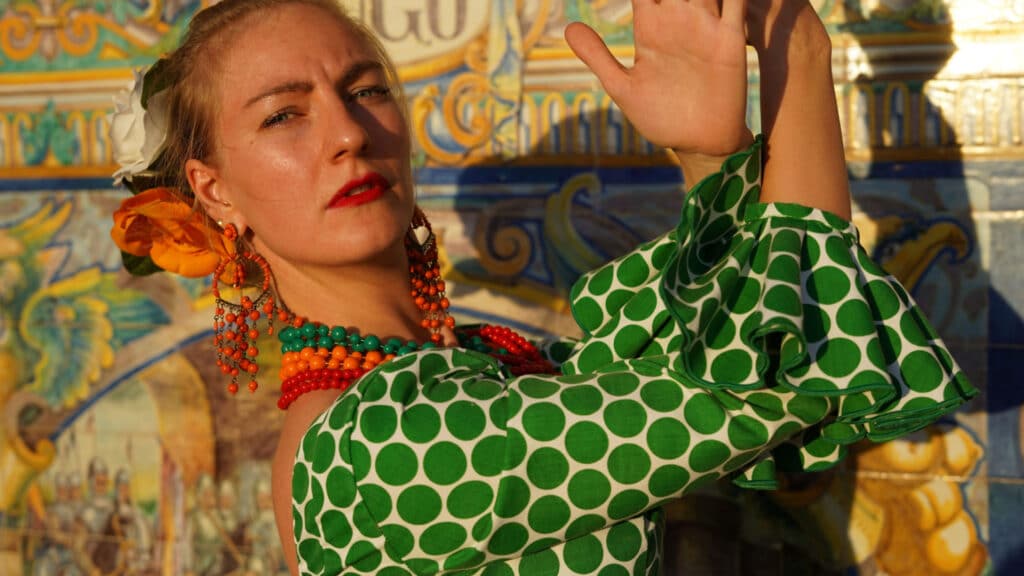
Lanzarote Carnival, also known as masquerade, runs for a week and is celebrated between February and March. The dates vary year on year depending on when Holy Week is, so check before you go.
Carnival in Spain and Lanzarote is huge. Everyone dresses up, and there are whole pop-up shops just for supplying costumes. They take dressing up very seriously. Most locals will stay “in character” through the Carnival.
During the Fiesta, there will be contests for Carnival Queens, Drag Queens (the Spanish love drag artists), murgas (Street Bands) and parades of all kinds. Parades with “batucada” (samba-style drumming) will go on until late at night.
Sports also feature highly unusual competitions such as draughts and chess played in shaded terraces. It is also an opportunity to attend a display of traditional sports and games such as “Lucha Canaria” (Canarian wrestling) and “Bola Canaria” (Canarian bowls).
If you have children with you, there will be plenty to amuse them. It is an excellent opportunity to get involved with arts and crafts workshops, dance classes, fairs, prize draws, singing, and storytelling; the kids will love it.
Head for a “verbena”, an open-air festival with live music and DJs.
These will be billed as starting at midnight, but the laid-back Spanish attitude to time means typically it starts at least an hour later and will go on until the morning.
Every municipality has a verbena, organised by the town council, during summer. The best thing is they are free to enter.
To close the festivities, the “entierro de la sardina”, or burial of the sardine, is performed. This ancient tradition represents the burial of the past and a new, brighter beginning.
The Carnival is fun, family-friendly and loud. The locals from Lanzarote know how to party!
Festival of the Virgen Del Carmen
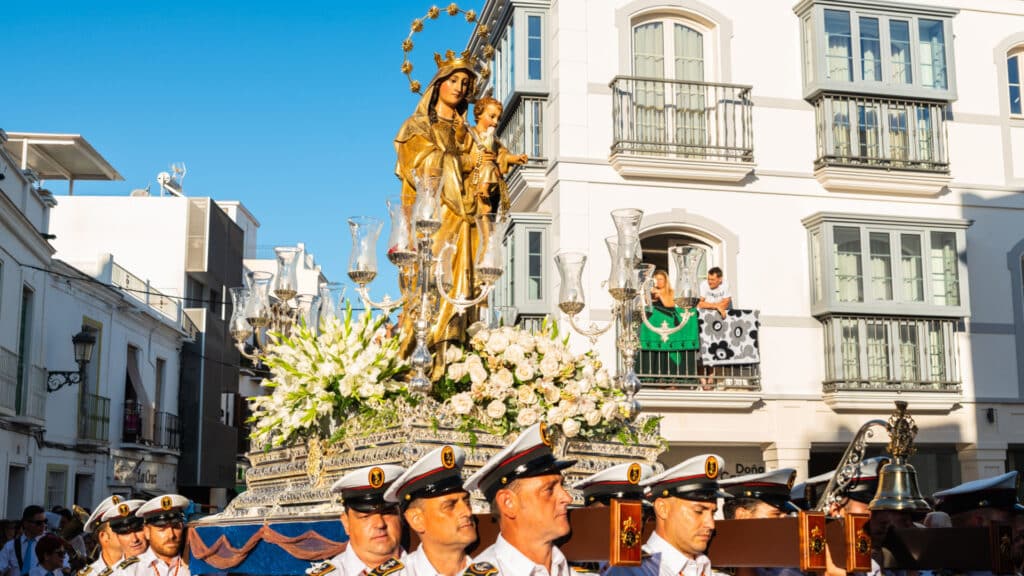
This is one of the most important fiestas in Lanzarote and the whole of Spain. The Virgin del Carmen is the Patron Saint of sailors, and the celebration is held on the 16th of July.
This celebration is significant to the coastal towns where an image, sometimes a colossal statue representation requiring a dozen men or more to carry it, when it is paraded through the streets.
It is a great honour to be chosen to carry the Virgen, and they practice frantically to ensure no slip-ups.
The effigy is loaded onto a boat adorned with flowers and decorations. It then sets sail through the sea, followed by several boats in the form of a maritime procession to ask for Saintly protection.
Although it is celebrated on the 16th of July, the festival is celebrated on different dates to avoid coincidence in Arrieta, Valterra (in Arrecife), La Santa, Puerto del Carmen and Playa Blanca.
Fiesta of the Virgin of Sorrows
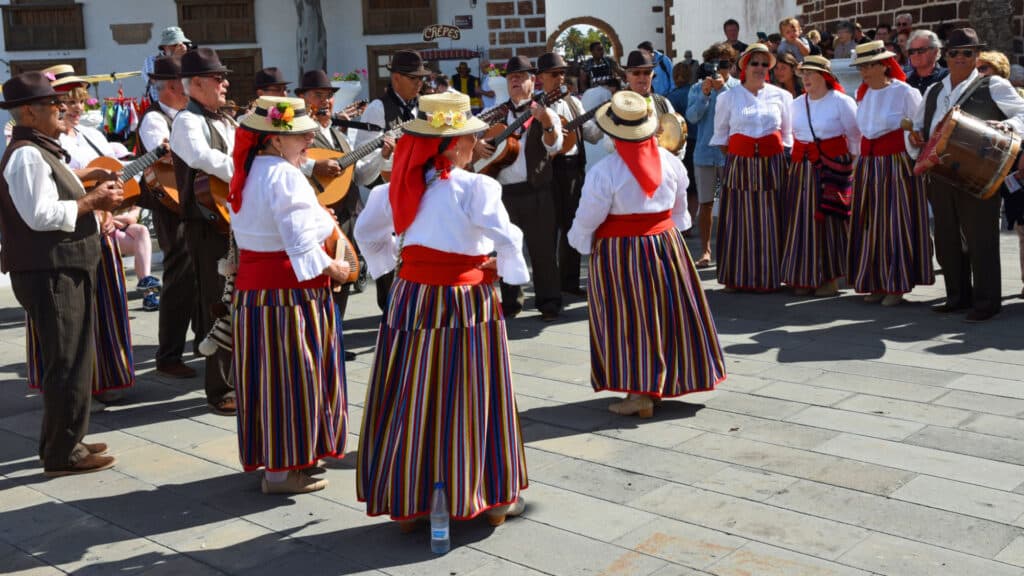
The Patron Saint of Lanzarote is Virgen de los Dolores or de los Volcanes and is held on September 15th. Lanzarote residents make a pilgrimage to Mancha Blanca to honour the virgin.
The history relates to her divine ability to stop lava flows and thereby save villages and crops. This festival has been celebrated for over 300 years and is one of the oldest in Lanzarote.
All the locals dress in typical Lanzarote costumes. If you wish to join in, there are plenty of shops selling traditional clothing and dresses, so you can fully immerse yourself in the festival’s ambience. This is a highly religious time, so please respect others’ beliefs.
Festivities of San Gines
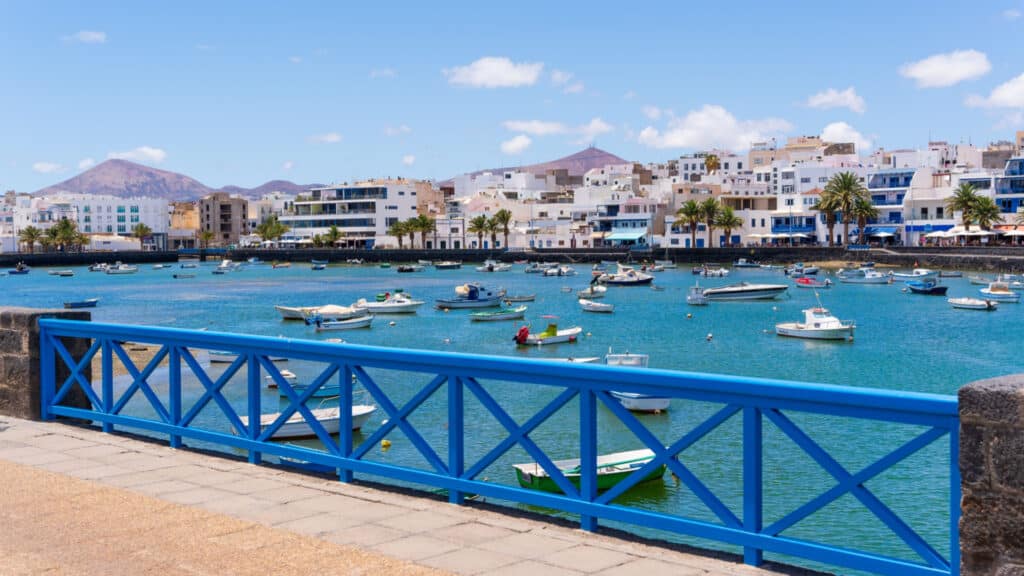
Saint Ginés has been the patron saint of Arrecife, and the Fiesta lasts for two weeks, culminating in the final night with a huge firework display and beach party on the 25th of August. This is not a national fiesta but only for Arrecife and has a history that goes back to the 16th Century.
With a longstanding maritime history, most of the action occurs in the water.
One highlight of the water festivities is the “Jolateros”, which means jokers! These weird little boats were made from used oil drums and were used to access the large trading ships anchored off the coast. Children race these little boats in the Charco de San Ginés; this is one of the festivities’ highlights.
There are concerts and theatre productions, and nightly firework displays. As with “Carnival”, there are various sports competitions, particularly “Bocha” tournaments. Bocha is very similar to Bowls or French pétanque and is very popular on the island.
There are many musical events during the festival, including verbenas, traditional dance performances, DJs and open-air concerts.
Fiestas de Famara
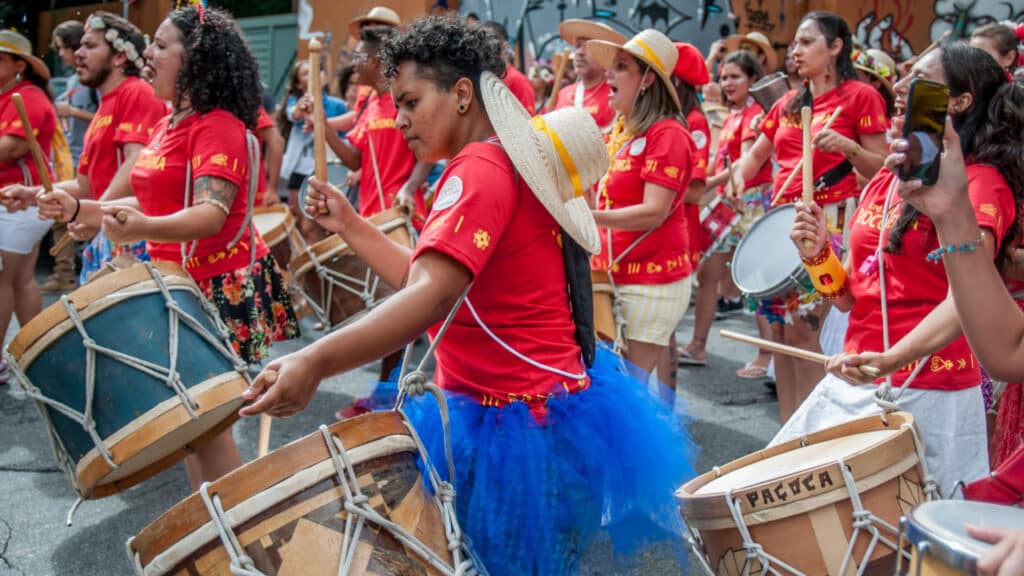
Famara has unquestionably one of Lanzarote’s most beautiful beaches. During the last week of August Famara celebrates the Virgen del Sagrado Corazón de María (Sacred Heart of Mary).
As this Fiesta is at the peak of summer, everyone is high-spirited and enjoying the beach. There are musical concerts, games and activities as with all Fiesta but Famara has something different.
The main attraction is the Verbena de Agua. Unlike normal verbenas, which are adult only and held in the evening, this one is family-friendly and held during the day.
On the celebration’s final day, a “batucada” (samba band) leads everyone to the main stage where the live music is playing. The crowds are then hosed down with water to keep them cool while dancing in the summer sun.
A fabulous family-friendly, memorable way to enjoy a fiesta.
Corpus Christi
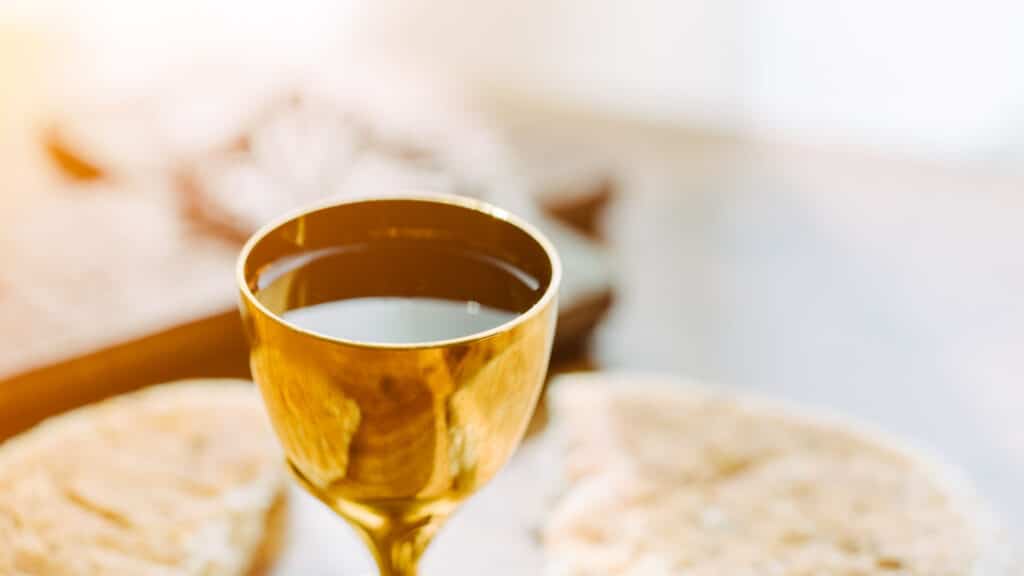
The Catholic religion is deeply rooted in Lanzarote, which is why many Fiesta are linked to Patron Saints.
In July is one of the most religiously significant festivals, Corpus Christi. The feast of Corpus Christi was introduced in the 13th Century as a celebration of Holy Communion.
During the procession, carpets of flowers are laid down on the other islands of the Canaries. In Lanzarote, this wasn’t possible due to water scarcity, so they had to be ingenious. What did they have plenty of? Salt, of course!
So in Lanzarote, instead of laying down flowers, they lay down salt, which has been coloured to resemble the flowers.
Murgas Contests
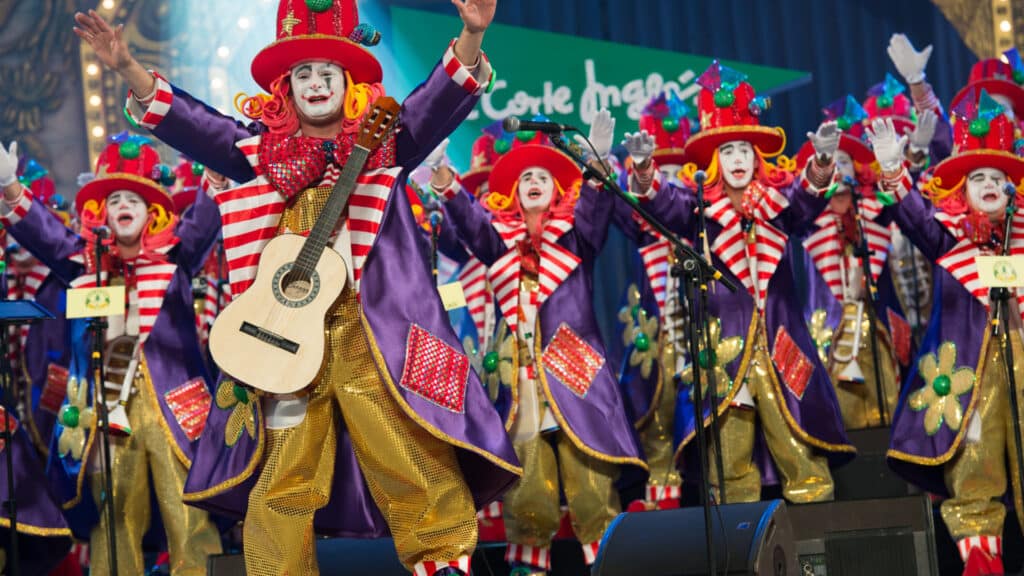
These are a particularly unique feature of carnivals in the Canary Islands. A Murgas contest is a group of people singing songs with lyrics highly critical of politics and politicians. Other social issues are sometimes addressed but primarily aimed at the political elite.
The base song will be well known, and the lyrics are changed and use humour and irony.
The contest has three rounds and a final and lasts for four days. The winners will be the group that stands out in lyrics, interpretation, subject matter and costumes. They even have children’s Murgas contests, which sounds a hoot, a load of kids mocking politicians!
Lanzarote Iron Man
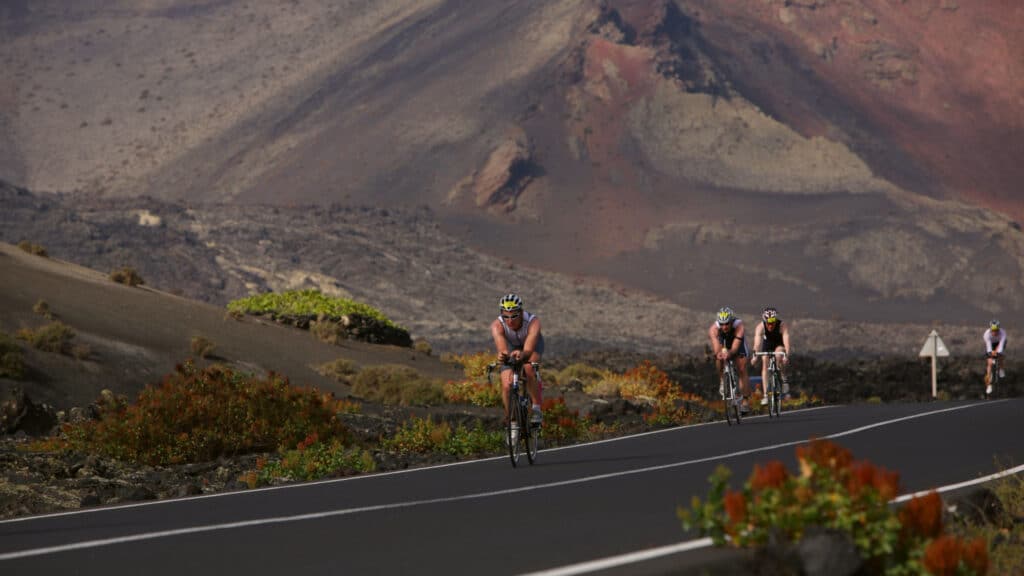
The Lanzarote Iron man is considered the toughest in the world, and every year in May, more than 2000 entrants compete. Top athletes complete the gruelling course in around 9 hours, but most take 12-13 hours.
For the duration of the competition and leading up to the start, Puerto del Carmen becomes a mecca for sports enthusiasts.
Fiesta Roundup
Lanzarote is like every part of Spain; they love a party. Whether religious, historically significant or just for fun, there are plenty of lavish fiestas.
As they are family-friendly, it is an excellent opportunity to enjoy Lanzarote culture with your family.
If you find yourself in Lanzarote during the summer, seek a local fiesta or go to one of the main Carnivals, such as Arrecife. You can be assured of a great time, a late night, loads of fun and some unforgettable memories.



